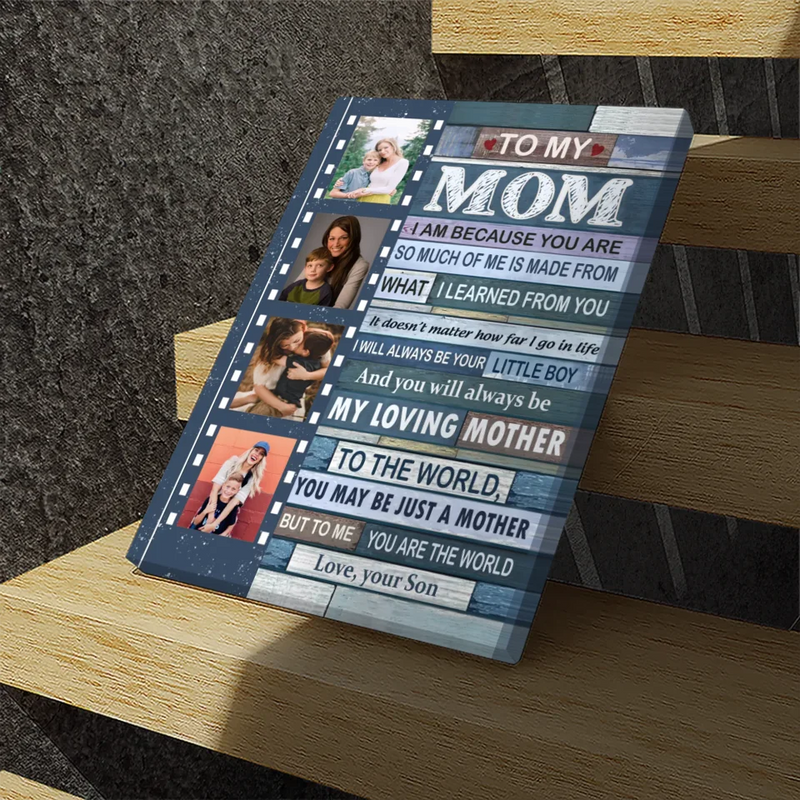How to Make Your Own Mouse Pad at Home
Make your own mouse pad right from the start with a simple project that transforms your workspace. This guide shows you an easy, creative method to design a personal accessory that combines functionality and style. Enjoy the satisfaction of a DIY project that fits your needs and reflects your personality.
In today’s fast-paced digital world, personal touches make all the difference. Our article will walk you through every step to create a unique, custom solution that enhances your desk while keeping costs low.
>>> Discover now:
- Top 35+ custom mouse pad designs you can order now
- Design a mouse pad with your own picture in minutes
- Create personalized mouse pads for your best friends

Why You Should Make Your Own Mouse Pad?
Taking the initiative to make your own mouse pad offers a blend of creativity and practicality. By choosing a DIY project, you embrace a hands-on approach that not only saves money but also results in a product that suits your personal style. Customizing your work area with a personal design can boost productivity and add a touch of uniqueness to your daily routine.
When you decide to create your own mouse mat, you’re investing in a product that is tailored to your comfort and aesthetics. DIY projects allow for experimentation with colors, textures, and designs, making each piece one of a kind. Additionally, opting for a DIY solution minimizes waste by using up recyclable materials, which is a smart, eco-friendly alternative to mass-produced items. With a few carefully chosen materials and simple techniques, you can craft a diy custom mouse pad that stands out from the ordinary.
Making your own mouse pad also provides a great opportunity to learn new skills and enjoy the creative process. The project is not only practical but also a fun and engaging activity that results in a personalized accessory for your computer setup.

Materials You Need To Create Your Own Mouse Mat
Before you begin, gather all the essential supplies to make your own mouse pad successfully. You will need a sturdy base material such as a rubber or foam sheet to ensure stability and smooth movement. Next, choose a top layer that offers a comfortable surface, like fabric or vinyl, that can be easily customized.
To create your own mouse mat, also include adhesive, scissors, and a ruler for accurate measurements. If you plan to print your own mouse pad design, ensure that you have access to high-quality printing resources. Each material plays a vital role in the final product, so select items that not only fit your budget but also guarantee durability and performance. The proper combination of these materials will result in a mouse pad that not only looks great but also withstands daily use.
Taking time to select quality supplies makes all the difference in the outcome. Whether you’re a beginner or an experienced DIY enthusiast, having the right materials on hand is the first step toward a successful project.

Step-By-Step Guide: How To Make Your Own Mouse Pad At Home
Step 1: Choose The Right Material
Begin by selecting a base material that will serve as the foundation of your mouse pad. Look for a durable rubber or foam sheet that offers non-slip properties and a smooth surface for the mouse. Next, decide on the top layer, such as fabric or vinyl, that suits your aesthetic and functional needs. The chosen materials should complement each other to provide both comfort and stability during use.
Step 2: Cut The Base To The Desired Shape
Using a ruler and sharp scissors or a craft knife, measure and cut your base material to the preferred size and shape. Accurate cutting is essential to ensure the final product is neat and well-proportioned. Make sure the edges are smooth to prevent any fraying or peeling later on. Taking your time during this step will set the foundation for a professional-looking make your own mouse pad.
Step 3: Attach The Fabric Or Custom Design
If you wish to print your own mouse pad design, prepare your printed fabric before attaching it to the base. Align your fabric carefully with the cut base, ensuring a uniform look and proper fit. Use a strong adhesive or fabric glue to secure the top layer, pressing it firmly to avoid air bubbles. This step transforms your chosen materials into a unified, attractive design that reflects your personal style.
Step 4: Secure The Edges & Let It Dry
Once the fabric or design is in place, trim any excess material around the edges. Use additional adhesive if needed to secure the borders, ensuring there are no loose corners. Allow the entire assembly to dry completely in a well-ventilated area. Following these careful steps will guarantee that your make your own mouse pad is durable and ready for everyday use.

Tips For Making A High-Quality DIY Custom Mouse Pad
To achieve a superior finish on your make your own mouse pad, start by choosing a base that offers excellent grip and durability. A non-slip surface is crucial to prevent unwanted movement while using your computer. For the top layer, select a material that is both smooth and resilient to ensure the best performance for your mouse.
Consider applying a waterproof coating or sealant to protect the surface from spills and stains. This extra step not only preserves the aesthetic quality but also extends the life of your diy custom mouse pad. Experiment with different textures and designs to create a product that is both functional and visually appealing. Attention to these details will help you achieve a professional result with a personal touch.
Investing a bit more time in preparation and finishing can significantly enhance the final product. Every choice you make, from materials to adhesive type, influences the performance and appearance of your creation.
Common Mistakes To Avoid When Creating Your Own Mouse Mat
While the process to make your own mouse pad is simple, there are common pitfalls that can affect the final outcome. Avoid selecting low-quality adhesives that may fail over time, causing the top layer to peel away from the base. Similarly, using materials with an uneven texture might hinder the smooth movement of your mouse and compromise comfort.
Another frequent error is inaccurate measuring and cutting, which leads to a misaligned design and an unprofessional finish. Always double-check your measurements before making any cuts, and use proper tools to achieve clean edges.
By being mindful of these potential mistakes, you can ensure that your project results in a durable and aesthetically pleasing mouse pad that meets your expectations.
Take your time during each step, and don’t rush the process. A well-executed project not only looks better but also functions more reliably during everyday use.
Summary
Taking the initiative to make your own mouse pad empowers you to create a personalized, efficient accessory for your workspace. This guide has provided clear steps from selecting quality materials to ensuring a professional finish through careful assembly.
If you want a personalized mouse pad made even more easily, check out our customize platform for an effortless solution.
By following these steps, you can enjoy the benefits of a unique design tailored specifically for your needs. Embrace the DIY spirit and let your creativity shine every time you work at your desk. Enjoy your new, one-of-a-kind mouse pad and the personal satisfaction that comes with it.
























